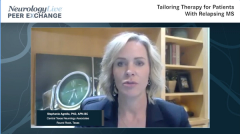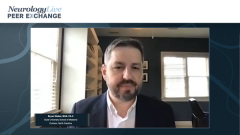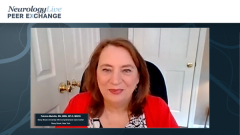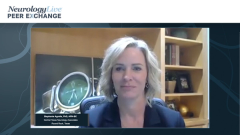
Sequencing Therapies in RRMS
Best practices for establishing treatment plans for patients with relapse-remitting multiple sclerosis (RRMS) and making decisions to switch therapies based on inadequate treatment responses, relapse, or disease progression.
Episodes in this series

Transcript:
Amy Perrin Ross, APN, MSN, CNRN, MSCN:Let’s move into section 2, which is about sequencing therapies in relapsing-remitting MS [multiple sclerosis]. Christen, please lead off our discussion about monitoring response to therapies, imaging, and rationale for switching.
Christen Kutz, PhD, PA-C:When I first became a neurology PA [physicians assistant] 21 years ago, the discussion I had with patients was about how many times per week they would inject, so we just had the ABC therapies. Now with all these different treatment options, sequencing is very strategic. We can’t just think about what the patient needs right now, we must look at what they may need in the future. Determining whether a treatment is working for a patient, we look at a lot of different factors, like MRI [magnetic resonance imaging] stability, relapses, disability progression, and how well they’re tolerant or adherent to the medications. When we’re considering switching to a different DMT [disease-modifying therapy], we may have to do some testing, and that could be dependent on what you’re switching to. So that could be laboratory testing, JC virus [human polyomavirus 2] antibody testing, EKGs [electrocardiogram], OCTs [optical coherence tomography], or MRIs. I typically do check an MRI of the brain, before changing to a new DMT.
As far as rationale for switching therapies, we look at lack of efficacy. Are the patients having any relapses? Is their disease progressing? Are they having tolerability issues or adverse effects with their current DMT? We also look at safety measures. Do they have elevated liver enzymes or lymphopenia? Are they having infections? Are they now JC virus antibody positive? These are all factors that could play into a DMT switch. Lastly is patient choice. It’s important to involve patients in their treatment decision-making because they may have certain things that are important to them as far as their treatment goals that we may not recognize.
Amy Perrin Ross, APN, MSN, CNRN, MSCN:That was a great comprehensive review of your thoughts. I agree with everything you said. I’d like to hear briefly from our other 3 panel members, if they have anything they’d like to add to that.
Bryan Walker, MHS, PA-C: I like having that direct and shared decision-making with patients going into this. Because we have so many different DMT options, it’s unreasonable for you to just say, “Here’s this website,” or “Here’s several pieces of information about the different drugs. What do you think?” In my mind, when I’m walking into that room, I’ve done all the things that Christen had said, taking into consideration age, comorbidities, status of things like an anti-JC virus antibody index, then forming 2 or 3 different options that I’m comfortable with. I just want to make sure that the patient’s comfortable with that, then engage them into that decision-making so that they own that themselves, and hopefully will increase adherence. Pat mentioned the fact that we have oral medications that can be multiple times per day. As we do that, we all know that you decrease the adherence to the dosing schedule, the more pills that you have to take, or how frequently you have to take them. Again, if they’re completely needle-phobic, then we’re going to take those off the table. We must go into that conversation with the patient already being comfortable ourselves with, say, 2 or 3 different decisions to engage the patient with. I’d like to hear what Pat or Stephanie has to say.
Patricia Melville, RN, MSN, NP-C, MSCN: I follow your philosophy. Sometimes it’s a negotiation with the patient, seeing what their risk tolerance is, whether you think they’re going to be able to be adherent with the monitoring requirements that particular DMT may require, whether it be frequent blood work, frequent MRIs, frequent visits. Sometimes it does require a bit of negotiation with them.
Stephanie Agrella, PhD, APN-BC: I would just add 1 other factor. Access is also a factor when we’re talking about sequencing because what we might discuss with the uninsured patient vs the insured patient—or perhaps the patient who’s getting ready to switch from commercial insurance to governmental insurance—that somewhat changes our discussion, unfortunately. That would be the only other thing I would add.
Amy Perrin Ross, APN, MSN, CNRN, MSCN:Thank you all so much. I would like to thank this wonderful panel, Christen Kutz, Stephanie Agrella, Bryan Walker, and Patricia Melville for this wonderful discussion. I’d like to thank you, as an audience, for watching Neurology Live® Peer Exchange. If you enjoyed the content, I suggest that you subscribe to the Neurology Live® newsletters to receive information about upcoming Peer Exchange segments and other content available to you. Thank you all so much.
Transcript edited for clarity.
Newsletter
Keep your finger on the pulse of neurology—subscribe to NeurologyLive for expert interviews, new data, and breakthrough treatment updates.





























